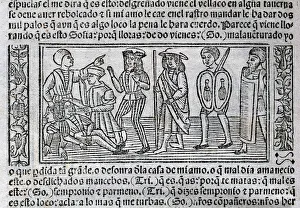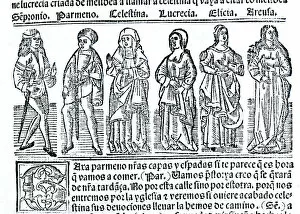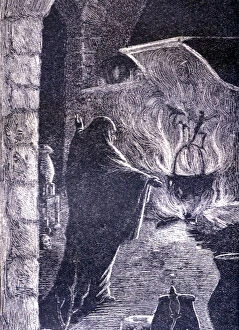Celestina Collection
Celestina, a timeless masterpiece of Spanish literature, was penned by the talented writer Fernando de Rojas (1465-1541
All Professionally Made to Order for Quick Shipping
Celestina, a timeless masterpiece of Spanish literature, was penned by the talented writer Fernando de Rojas (1465-1541). This tragicomedy has left an indelible mark on the literary world and continues to captivate readers even today. In 1885, Geo. Whight & Co advertised their musical adaptation of Celestina, showcasing its enduring popularity. The 15th and 16th-century setting of Castilian Castle adds a touch of historical charm to this intriguing tale. The artistic genius Robert Henri brought Celestina to life in his 1908 creation. His portrayal beautifully captures the essence of this complex character and her role in shaping the fate of Calixto and Melibea. Fernando de Rojas' original work gained widespread recognition with its printed edition cover featuring Calixto and Melibea. The Tragicomedy of Calixto and Melibea, also known as La Celestina, delves into themes of love, desire, and human nature that resonate across time. Feliciano de Silva's Second Comedy further explores the intricacies surrounding these characters. Its printed edition from 1550 stands as a testament to the enduring legacy that Celestina holds within Spanish literature. La Celestina wakes Melibea in an engraving published in 1883—a pivotal moment that sets forth a chain reaction leading towards tragedy or redemption. Another enchanting engraving from the same year depicts Celestina casting her spell—an iconic image synonymous with her manipulative power over others. Underneath a tree lies Calixto and Melibea in yet another mesmerizing engraving from 1883—symbolic of their forbidden love blossoming amidst societal constraints. This evocative scene encapsulates one aspect among many that make La Celestina such a compelling read.












